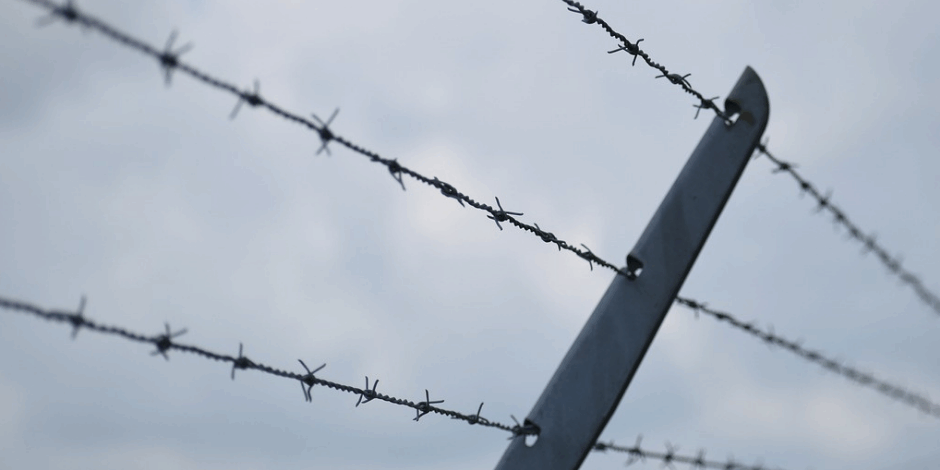On 8th December 2024, the Assad regime in Syria collapsed at the hands of an offensive by opposition forces Hay’at Tahrir al-Sham (HTS) and the Turkish-backed Syrian National Army. Amid scenes of shock and jubilation, approximately 2,000 detainees held at the notorious Seydnaya prison outside Damascus emerged to a fundamentally changed Syria, whilst thousands crowded the complex to search for missing loved ones.
Images of children born in the prison leaving for the first time and reports of prisoners who had forgotten their own names and were unaware of Hafez al-Assad’s death in 2000, dominated the media. Rumours circulated of secret underground cells holding scores of unreleased prisoners, and whilst official searches by HTS and the White Helmets came up empty, desperate family members continued the search camped in the hills outside the complex, burning prison records to keep warm. In the days and weeks that followed, the story of Syria’s ‘disappeared’ expanded far beyond the walls of Seydnaya. One by one the media reported on mass graves attributed to the regime, including the site at al-Quatifah containing an estimated 100,000 victims, although it is anticipated that numbers could be much higher.
As a data researcher for MaGPIE’s WP1.1, tasked with collecting and triangulating open-source data to contribute to a global map of mass graves, mapping Syria’s mass grave sites presented an uncommon challenge. I started mapping Syria’s mass graves at the beginning of November 2024, and finished a week before the Assad regime fell. Whilst having the mass graves front and centre in the media gave me the rare opportunity to supplement my primary investigations, I was particularly struck by the media framing of the sites as ‘discovered’ and ‘found.’ Mass graves are phenomena that are usually shrouded in secrecy, a way for perpetrators to hide crimes and silence condemnation of human rights abuses. As such, gathering open-source information on sites prior to either exhumation, or in cases where the perpetrators are very much still active, can present a significant challenge. Remarkably, for Syria comprehensive sources on the location of the sites, circumstances behind the creation of the sites, and information on the victims, were all readily available. This means that these mass graves could never be ‘discovered;’ they were clearly already known about by both significant aspects of the Syrian population, as well as by the international community.
A common theme in WP1.1 has been the paradox of mass grave data being “both incomplete and overwhelming,”[1] which is certainly a nomenclature that could be placed on Syria. There are still significant gaps in our knowledge which will only be filled by internationally recognised standards of forensic investigation. Significantly for MaGPIE, we have found an approach that accounts for this variability in the quality and accessibility of information on mass graves can reveal both the value that’s placed on certain phenomena, as well as the forms of knowledge utilised to support them. Taking this approach, the fact that we have as much information as we do about the sites in Syria not only highlights the incredible risks that informants, witnesses and regime defectors have taken to smuggle this information out of Syria, but also reveals insights into the fundamental nature of the Syrian regime.
Specifically, both the scale and brutality of the Assad regime is beyond compare in the 21st century. The main sites at al -Qatifah and Njaha Cemetery can best be described as an assemblage of countless individual mass graves, each up to 500 square meters in size. Al- Qatifah alone covers an area of 10 acres, the length of approximately 7 football fields. Witness testimonies established that on average 600-750 bodies were transported to the sites every week whilst the sites were most active. The estimated number of missing persons in Syria from enforced disappearances under the regime ranges conservatively from 130,000 to up to 3 million, leading Stephen Rapp who led prosecutions at both the Rwanda and Sierra Leone war crimes tribunals, to declare the sites as a “machinery of death” that hasn’t been seen, “since the Nazis.”[2]
What distinguishes Syria from other comparable cases is that the regimes own documentation of its crimes was unusual; it is rare to have so much evidence direct from perpetrators themselves. Between 2011 and 2013 ‘Caesar,’ an official forensic photographer for the military police, smuggled out of Syria photographs of the bodies of 6,821 victims. The images were taken in military hospitals, where bodies were transported from detention sites such as Seydnaya, labelled, photographed, and given fictitious causes of death for falsified death certificates. The images taken by Caesar were independently forensically evaluated in the 2014 Rothchild report and corroborated by the Human Rights Watch report ‘If The Dead Could Speak,’[3] showing, “clear evidence, capable of being believed by a tribunal of fact in a court of law” of war crimes and crimes against humanity.[4] Similarly, in 2017 ‘The Gravedigger,’ an administrator in the Damascus Cemetery office who was coerced by the regime to oversee the disposing of bodies in Najha and al- Qatifah, fled Syria. He went on to testify in the trial of Anwar Raslan in Germany, leading to his conviction under universal jurisdiction for crimes against humanity and testified in the US senate. He was also interviewed for a New York Times investigation with the Association of Detainees and Missing of Sednaya Prison, which in 2022 published an investigation locating both the sites at al- Qatifah and Njaha, both clearly identifiable on satellite imagery.[5]
There are many reasons why the Syrian regime documented its own human rights abuses. In the recent Dabbagh trial (Ali Mamlouk, Jamil Hassam and Abdel Salam Mahmoud) in Paris under universal jurisdiction, expert witness Ziad Majed emphasised that violence was targeted to weaken the national aspects of the revolution, rather than indiscriminate, and that “with the use of numbers, dehumanisation goes all the way”[6]. Undeniably then, the mass graves of Syria stand not as evidence of a faltering regime desperately clinging to power in the face of a never-ending civil war, but as proof that violence and horror were very much woven into the foundations of the Syrian state itself. I will be starting my PHD this month on this very topic. Crucially, by recognising that Syria’s mass graves were never intended to be hidden, I hope to take the necessary first step towards uncovering the “rule of violence” that sustained the Syrian regime[7].
Ellen Donovan
[1] Wedeen, L. (2019) Authoritarian Apprehensions: Ideology, Judgement, and Mourning in Syria. University of Chicago Press, London. pp. 95-96
[2] Reuters, ‘Syrian Mass Graves Expose ‘Machinery of Death’ Under Assad, Top Prosecutor Says’ International Centre for Transitional Justice (20/12/2024) (accessed 27/04/2025 https://www.ictj.org/fr/node/37121)
[3] Human Rights Watch, ‘If the Dead Could Speak; Mass Deaths and Torture in Syria’s Detention Facilities’ (2015) (accessed 20/11/2024 https://www.hrw.org/report/2015/12/16/if-dead-could-speak/mass-deaths-and-torture-syrias-detention-facilities)
[4] Lorenz de Silva QC, D. Nice QC, G, Crane, D. ‘A Report into the credibility of certain evidence with regard to Torture and Executions of Persons Incarcerated by the current Syrian regime,’ Carter-Ruck and Co. Solicitors of London, (21/01/2014)
[5] Hubbard, B. Simons, M. ‘Mass Graves Identified in Syria Could Hold Evidence of War Crimes’ New York Times (16/03/2022) (accessed 20/11/2024 https://www.nytimes.com/2022/03/16/world/middleeast/mass-graves-syria-war-crimes.html)
[6] Mahmoud, M, H. ‘Inside the Dabbagh Trial No.1’ The Syria Justice and Accountability Centre (05/03/2025) (accessed 27/04/2025 https://syriaaccountability.org/inside-the-dabbagh-trial-1-presiding-judge-raviots-opening-statement/)
[7] Ismail S. The Rule of Violence: Subjectivity, Memory and Government in Syria. Cambridge University Press; 2018








I didn’t realise so much horrific information was available.Civilisation has made very little progress in over 2,000 years.